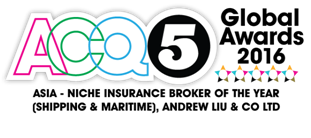Petcoke
Petcoke : it can be dirtier than you think
Petcoke is short for petroleum coke, which is a byproduct of the oil refinery coking process that produces low-cost fuel, often with a high sulphur content. Petcoke may also be known as green delayed coke, sponge coke, needle coke, delayed coke or raw coke-fuel grade.
Petcoke takes the form of a black residue that can vary from a powder to small pieces. It is shipped as a bulk or packaged cargo mainly from North America, Western Europe, China and Japan. It is used as a fuel in power stations, cement kilns and domestic heating or it can be involved in making anodes for chemical and metals processing.
The Code of Safe Practice for Solid Bulk Cargoes, 2004, (BC Code) contains no specific requirement for hold cleaning after discharge but petcoke can be a very dirty cargo. Some types have very high oil content, leaving oily stains which are difficult to remove, whereas others are fairly dry, making the washing of holds quite an easy process following discharge.
All cargo stains left after discharging petcoke should be removed as soon as possible in order to avoid accumulated cleaning problems. Stains can be removed by using high-pressure spray systems for applying chemicals from the tank top.
The choice of chemicals and/or cleaning agents should be carefully considered. Personnel must wear appropriate protective clothing and equipment (see Chemical suits: not all the same in Signals 62). Petcoke residues and chemicals suspended in water spray can be an irritant to eyes and skin.
Petcoke residues
All grades of petcoke originate from crude oil. Grades such as green delayed petcoke can be high in oil content and pose the most difficult cleaning problems. Calcined petcokes are easier to clean as the oily residues are burnt off during the calcining process.
Wash water from calcined grades of petcoke will have cargo residues but may have little or no trace of oil and low-hazard wash chemicals that emulsify into a harmless solution. Wash chemicals that emulsify and can be discharged overboard are listed in Annex 12 of IMO MEPC.2/Circular 11 - Provisional categorization of liquid substances.
Wash water from cleaning after carriage of green delayed petcoke will also have cargo residues but is likely to contain oil or hydrocarbon traces that may leave an oily type sheen on the surface of water, which will almost certainly prevent discharge overboard. In addition, the wash chemicals used for cleaning may be of the more hazardous grades that do not emulsify and also cannot be discharged overboard.
Disposal into the sea of all cargo residues is not allowed within a special area as defined in MARPOL Annex V, and outside a special area the wash chemicals and/or oil residues may prevent discharge overboard. It may be difficult for such wash water to be held on board due to its large quantity, especially if there are no suitable port reception facilities.
Shipowners are advised to check with wash chemical manufacturers before planning hold-washing operations.
Allocating responsibility for the time and cost of such operations should also form part of the 'check before fixing' process prior to entering into charterparty agreements. BIMCO is working to produce a standard clause for the disposal of hold washings in recognition that disposing of such hold washings may become a problem for ship operators.
High sulphur and corrosion risk
All grades of petcokes have a sulphur content but the lower grades of uncalcined (sponge) petcokes are primarily used as low-cost high-sulphur fuels. Some of this sulphur may leach into the wash water although expert advice suggests that petcoke sulphur is not water-soluble.
If the sulphur content of the petcoke is high it may be prudent to test the wash water for pH value before discharge overboard.
Corrosion can occur where there is pre-existing damage or where the petcoke damages the hold paint system. An electrochemical corrosion mechanism is set up where the exposed steel becomes anodic in the presence of moisture as the electrolyte.
The large surface area of petcoke pieces increases the likelihood of a high moisture content which can promote corrosion. Specialist advice to anticipate, minimise or correct this type of corrosion is strongly recommended.
| Residues from petcoke | MARPOL Annex V requirements |
| Cargo residues | The cargo residues are category 4 garbageunder MARPOL Annex V. |
| Oil or hydrocarbon traces - may leave an oily typesheen on the surface | Regulation 3(2) or 5(3) of Annex V may apply:When the garbage is mixed with other dischargeshaving different disposal or dischargerequirements the more stringent requirementsshall apply. |
| Wash chemicals - non-hazardous whichemulsify into harmless solution or morehazardous grades which do not emulsify |





